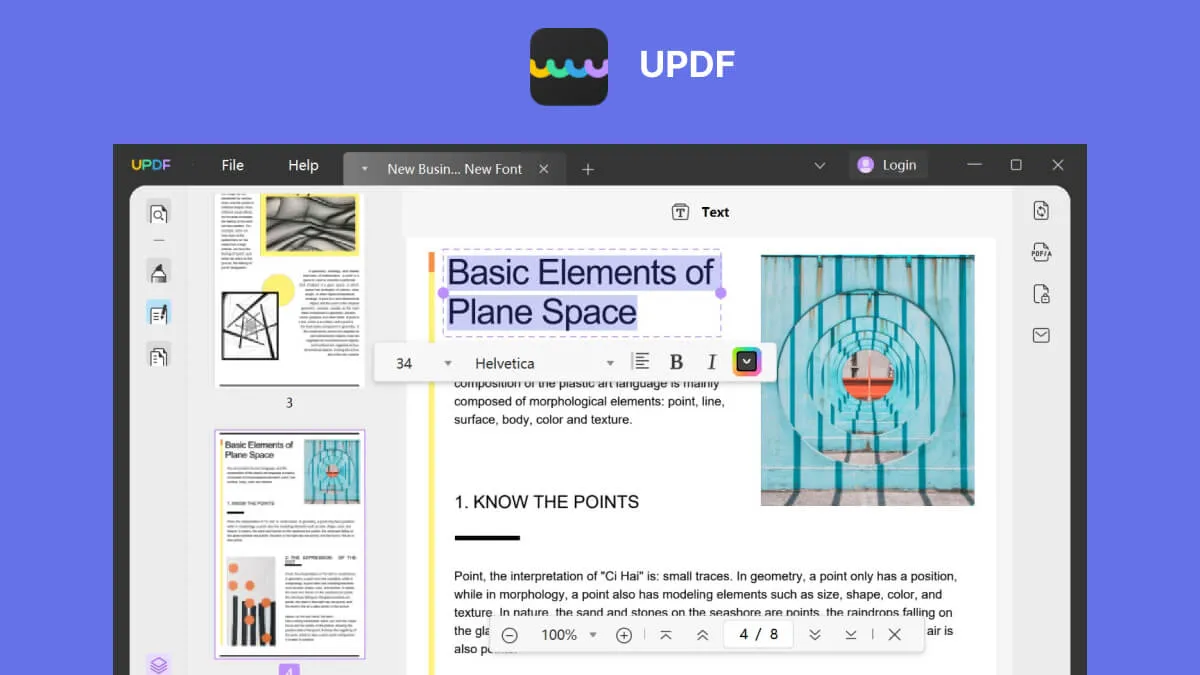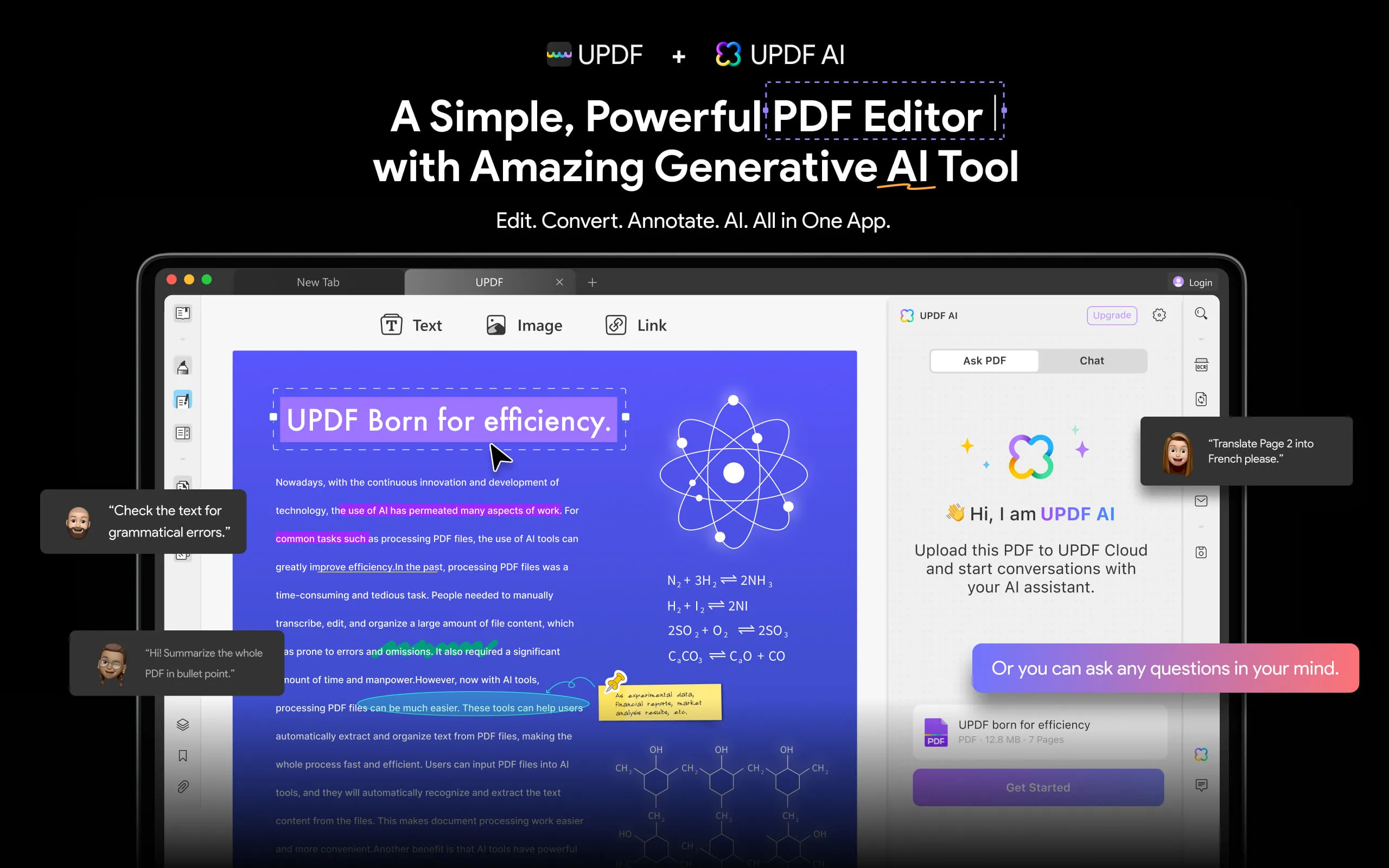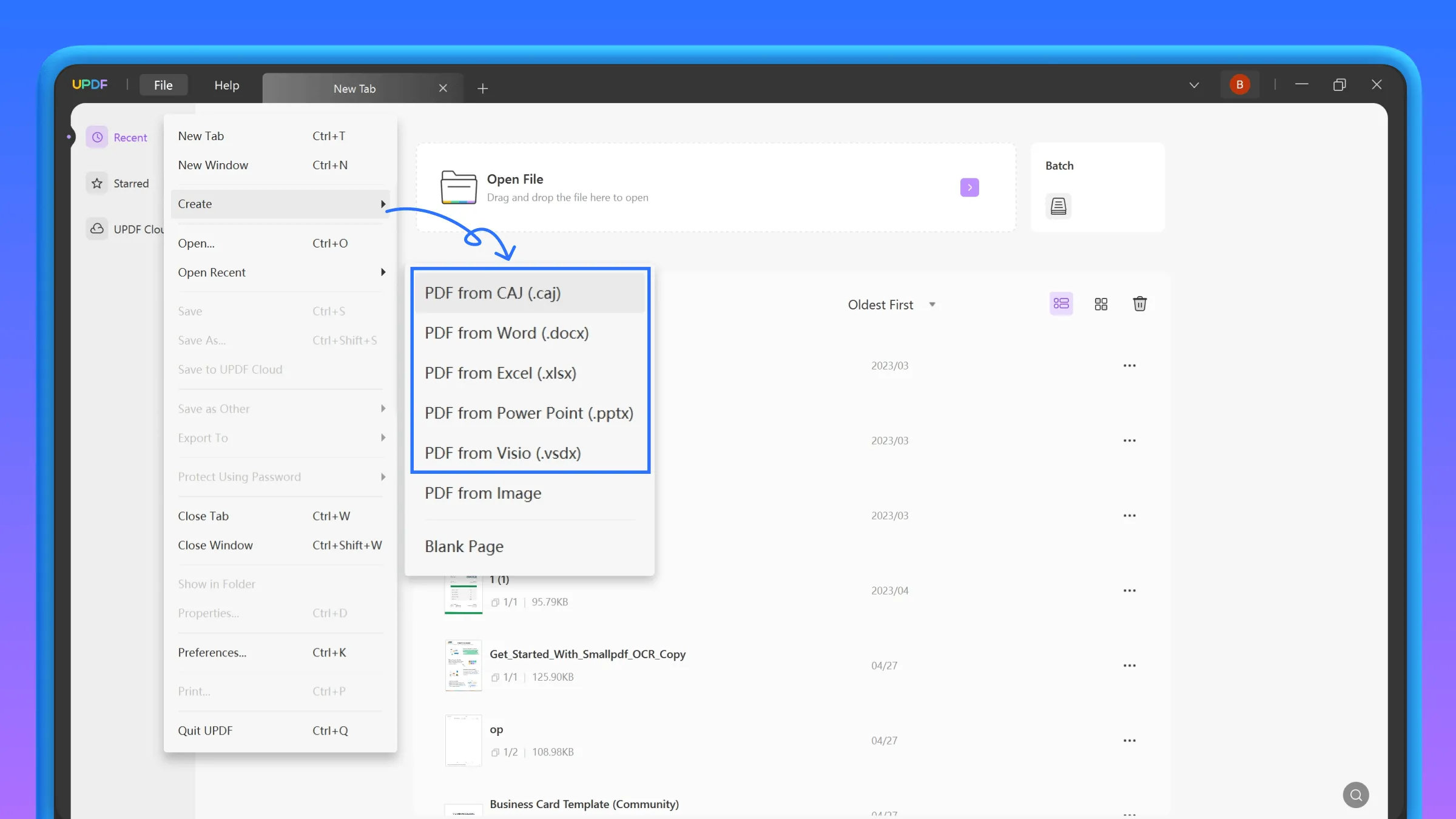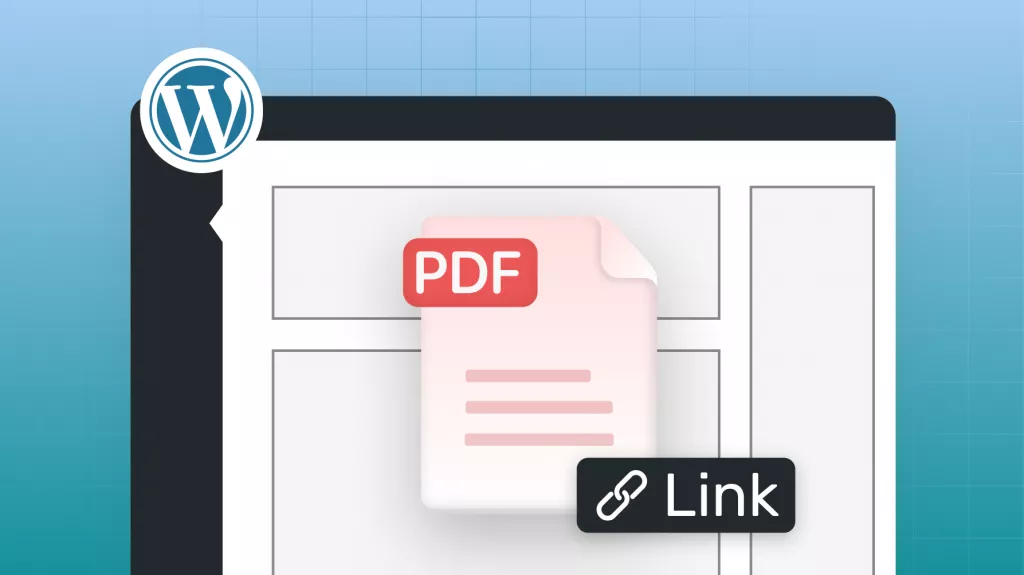Exploring the realm of PDF management on Chromebooks, many users ponder the suitability of Adobe Reader for Chromebook. This blog post delves into the compatibility and alternatives, urging readers to navigate through our comprehensive insights. Discover the best PDF solutions for your Chromebook by reading on to uncover detailed evaluations and recommendations.
Part 1. Can You Put Adobe Reader on a Chromebook?
The answer is technically yes but not completely. You can put Adobe Reader on a Chromebook, but not in the traditional desktop application form due to the Chromebook's operating system, Chrome OS, which primarily supports web-based and Android applications. Instead, Chromebook users can access Adobe Reader through the Google App Store as an Android app or use the web-based version of Adobe Acrobat for basic PDF viewing and commenting functionalities. This solution suits users who need to access PDFs for reading or minor annotations.
However, Chromebook users might seek more comprehensive PDF management features, such as editing text, changing images, or adjusting PDF margins, which the Android version of Adobe Reader might not fully support. In scenarios requiring more advanced PDF editing and management capabilities, an alternative like UPDF presents a valuable solution. UPDF offers a wide range of PDF editing tools that are easily accessible on a Chromebook, ensuring users have a powerful, all-in-one PDF editor at their fingertips.
For Chromebook users needing to go beyond basic PDF viewing and annotation, UPDF stands out as a robust and versatile option. It provides an intuitive platform for managing PDF documents with ease, including editing, annotating, converting, and more. Try UPDF today to enhance your PDF experience on Chromebook.
Windows • macOS • iOS • Android 100% secure

Part 2. What Is the Alternative to Adobe Reader for Chromebook Users?
Building on the limitations of Adobe Reader on Chromebooks, it becomes clear that users often require more advanced features for their PDF management needs. Recognizing this demand, UPDF emerges as a superior alternative, offering a comprehensive suite of tools that go beyond basic viewing and annotation available in Adobe Reader. This section will delve into the features of UPDF including the following:
- Read PDF: Improve your PDF readability with multiple layouts, including single-page view, two-page view, scrolling, or two-page scrolling.
- UPDF AI: UPDF's AI capabilities enable you to summarize long PDF contents, translate them into different languages, and provide explanations for better understanding.
- Annotate PDFs: UPDF offers extensive annotation tools, including highlights, text boxes, attachments, and shapes, for an intuitive reading and editing experience.
- Convert PDFs: Quickly and accurately convert PDFs to and from various formats like Word, Excel, and more, maintaining the original layout and format integrity.
- OCR PDF: The advanced OCR feature in UPDF can recognize text in scanned PDFs across 38 languages, making your documents editable and searchable.
- Batch PDF: Insert a single PDF into multiple files collectively without quality loss.
- Edit PDF: UPDF allows you to edit text and images in your PDFs as easily as you would in a Word document.
- Organize PDF: Efficiently manage your PDF pages by extracting, splitting, rotating, reordering, or adding new pages.
- Compress PDFs: Decrease the file size of your PDFs without compromising quality.
- Fill and Sign: Design and add electronic signatures to your PDFs.
- UPDF Cloud: With the power of cloud computing, you can view your PDF from any device.

For Chromebook users seeking a versatile and efficient PDF tool, UPDF represents a significant upgrade over Adobe Reader. With UPDF, the full potential of PDF management is unlocked, encouraging users to explore its comprehensive features for a better document handling experience. Check out UPDF to learn more!
Windows • macOS • iOS • Android 100% secure
Part 3. Is Adobe Reader Necessary for Viewing PDFs on a Chromebook?
It depends. It's worth noting that Chromebook users have the option to open and read PDFs without installing a dedicated PDF reader. Chromebooks are equipped with a built-in PDF viewer within the Chrome browser. However, while this built-in feature facilitates easy access to PDF documents, it comes with its own set of limitations, especially when compared to more comprehensive solutions. The default PDF viewer on Chromebooks, while convenient for quick access, presents several shortcomings for users needing more than basic viewing:
Shortcomings:
- It lacks advanced editing capabilities, such as adding or modifying text and images within PDF documents.
- Users cannot annotate or highlight text for note-taking or feedback purposes as comprehensively as they might need.
- The default viewer also falls short in offering document management features like merging, splitting, or converting PDFs to different formats.
- Customization options for reading, such as adjusting the background color or text size for better readability, are limited.
- These limitations underscore the necessity for a more robust PDF management tool for Chromebook users seeking a fuller range of functionalities.
In light of these limitations, UPDF Reader emerges as a highly capable alternative for Chromebook users. Offering a rich set of features that surpass the default viewer's capabilities, UPDF enables comprehensive editing, annotating, and document management, making it the go-to choice for those requiring enhanced PDF functionality on their Chromebook.
For Chromebook users looking to elevate their PDF editing capabilities without incurring costs, dive into our guide on how to edit PDF on Chromebook with free solutions. This resource is filled with practical tips and tools to enhance your document management effortlessly.
Part 4. FAQs About Adobe Reader for Chromebook
Q1. Why can't I open a PDF on my Chromebook?
If you're encountering issues opening a PDF on your Chromebook, it could be due to the system's default settings not being configured to use a specific PDF reader, such as Adobe Reader, for PDF files. This can be resolved by adjusting the default apps settings. However, it's important to note that the steps provided below are generally applicable to Windows environments and might differ from the process on a Chromebook, as Chrome OS uses web-based and Android apps. For Chromebook users, managing default applications might involve similar steps through the Google Play Store or Chrome browser settings. Here's a general guide that applies to systems where Adobe Reader can be set as a default app:
- On the Hosted Server (or your computer), click Start and type "Default Apps."
- Click on "Default Apps" from the search results to open it.
- Select "Adobe Reader" from the list of applications.
- Scroll down then click "Choose defaults for this program."
- Locate .pdf on the list, and add a checkmark in the box.
- Click "Save" at the lower right corner.
- Attempt to access your file again.
Q2. How do I create a PDF on my Chromebook?
Creating a PDF on a Chromebook is a simple process, thanks to the built-in features of Chrome OS and the availability of versatile tools like UPDF. Here are two simple methods to create PDF documents on your Chromebook:
1. Save as PDF
Chromebooks allow you to convert virtually any document or webpage into a PDF file directly from the Chrome browser. Here's how:
- Open the document or webpage you wish to convert.
- Open the print options (Ctrl + P)
- In the print dialog, change the destination printer to "Save as PDF."
- Choose your desired settings, such as layout and margins.
- Save the file and select the location on your Chromebook where you'd like to save the PDF file.
2. Create Blank PDF or From Word/Excel/PPT/Images with UPDF
UPDF enables you to create PDFs from scratch or convert existing documents, including Word, Excel, PPT, and images, and more into PDF format. Here's how to use UPDF on your Chromebook:
- Open UPDF and select the "Create PDF" option.
- To create a blank PDF, simply choose "Blank Document" and start adding text, images, or other elements.
- To create PDFs from other file formats (Word, Excel, Images, PPT, etc.), simply drag and drop the file to UPDF.

- UPDF will convert the file into a PDF. You can then edit, annotate, or further customize the PDF as needed.
- Save the newly created PDF to your Chromebook or to the cloud.
These methods provide Chromebook users with flexible options for creating professional-quality PDF documents, whether starting from an existing file or creating a new one from scratch.
Q3. What is the best PDF reader for Chromebook?
The best PDF reader for Chromebook is UPDF, thanks to its comprehensive features that go beyond just reading. It offers robust editing, annotation, and document management capabilities, making it an all-in-one solution for Chromebook users. UPDF's intuitive interface and versatile functionality make it the top choice for managing PDFs efficiently.
Conclusion
In conclusion, while Adobe Reader offers basic functionality for Chromebook users, UPDF stands out as the superior choice for comprehensive PDF management. With its broad range of editing tools and intuitive interface, UPDF ensures a seamless and productive experience. Elevate your PDF tasks on Chromebook by choosing UPDF today.
Windows • macOS • iOS • Android 100% secure
 UPDF
UPDF
 UPDF for Windows
UPDF for Windows UPDF for Mac
UPDF for Mac UPDF for iPhone/iPad
UPDF for iPhone/iPad UPDF for Android
UPDF for Android UPDF AI Online
UPDF AI Online UPDF Sign
UPDF Sign Edit PDF
Edit PDF Annotate PDF
Annotate PDF Create PDF
Create PDF PDF Form
PDF Form Edit links
Edit links Convert PDF
Convert PDF OCR
OCR PDF to Word
PDF to Word PDF to Image
PDF to Image PDF to Excel
PDF to Excel Organize PDF
Organize PDF Merge PDF
Merge PDF Split PDF
Split PDF Crop PDF
Crop PDF Rotate PDF
Rotate PDF Protect PDF
Protect PDF Sign PDF
Sign PDF Redact PDF
Redact PDF Sanitize PDF
Sanitize PDF Remove Security
Remove Security Read PDF
Read PDF UPDF Cloud
UPDF Cloud Compress PDF
Compress PDF Print PDF
Print PDF Batch Process
Batch Process About UPDF AI
About UPDF AI UPDF AI Solutions
UPDF AI Solutions AI User Guide
AI User Guide FAQ about UPDF AI
FAQ about UPDF AI Summarize PDF
Summarize PDF Translate PDF
Translate PDF Chat with PDF
Chat with PDF Chat with AI
Chat with AI Chat with image
Chat with image PDF to Mind Map
PDF to Mind Map Explain PDF
Explain PDF Scholar Research
Scholar Research Paper Search
Paper Search AI Proofreader
AI Proofreader AI Writer
AI Writer AI Homework Helper
AI Homework Helper AI Quiz Generator
AI Quiz Generator AI Math Solver
AI Math Solver PDF to Word
PDF to Word PDF to Excel
PDF to Excel PDF to PowerPoint
PDF to PowerPoint User Guide
User Guide UPDF Tricks
UPDF Tricks FAQs
FAQs UPDF Reviews
UPDF Reviews Download Center
Download Center Blog
Blog Newsroom
Newsroom Tech Spec
Tech Spec Updates
Updates UPDF vs. Adobe Acrobat
UPDF vs. Adobe Acrobat UPDF vs. Foxit
UPDF vs. Foxit UPDF vs. PDF Expert
UPDF vs. PDF Expert








 Enola Miller
Enola Miller 
 Enola Davis
Enola Davis 
 Enid Brown
Enid Brown 
 Enrica Taylor
Enrica Taylor